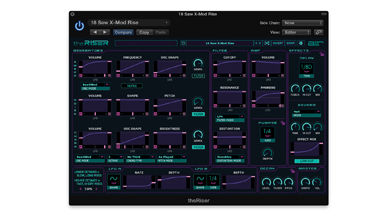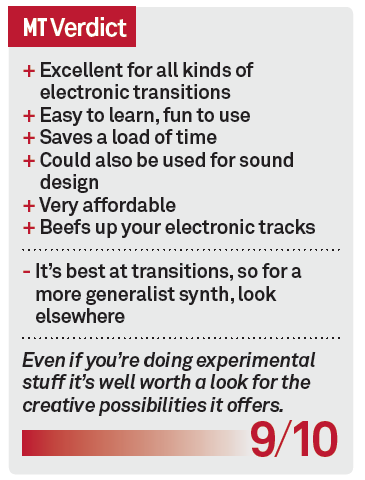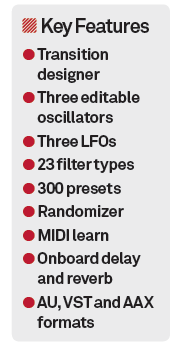Air Music Technology The Riser Review
Tired of programming endless sweeps, rises and falls in your electronic tracks? Hollin Jones finds out if Air Music Technology has the answer… Details Price £47.99 Contact Via website Web www.airmusictech.com Needs Windows 7 or higher OS X 10.7.5 or higher 2GB RAM Amazon.co.uk Widgets One of the key compositional tricks in many kinds of dance […]

Tired of programming endless sweeps, rises and falls in your electronic tracks? Hollin Jones finds out if Air Music Technology has the answer…



Details
Price £47.99
Contact Via website
Web www.airmusictech.com
Needs Windows 7 or higher OS X 10.7.5 or higher 2GB RAM
One of the key compositional tricks in many kinds of dance and other electronic music is the use of sweeps, rises and falls to build up to a change in the dynamics of a song. For the producer, these are essential to create dynamics within the track and let listeners know when the drop is coming. And although they can be programmed by hand, it’s quite fiddly to do over and over again.
Enter The Riser, from German developer AIR Music Technology. This software instrument is similar to a few we’ve seen recently in that it aims to give you a shortcut to a type of sound that gets used a lot in certain kinds of music, but is based on synthesis and not sampling.
In this case, it’s described as a transition designer optimised for electronic music production, scoring, and remix work. Although it has a complement of fully tweakable controls it also comes with 300 professionally designed presets grouped by category and style such as rises and falls, pitch, mod or atonal character as well as swells and fades.
The patches are designed to provide various different kinds of transition, from filtered swells to whooping sirens and everything in between. It does this by generating sound from its three oscillators: sweep, noise and chord, each with multiple editable characteristics.
The sweep controls the direction of the transition, the noise oscillator adds texture and grit, and finally the chord oscillator can be used to match the synth’s structure to your song’s key, or indeed any key you specify. Each also has a configurable filter so you can control the shape of the signal as soon as it leaves the oscillator. Three LFOs are available: free running, tempo synced, and ‘Pumper’, with configurable depth and, where applicable, rate controls.
Pump it Up
There’s a second filter stage with 23 filter types available and control sections for cutoff and resonance, plus a distortion stage with variable distortion modes to add crunch and bite to the sound. The effects you tend to use most on these kinds of sounds are delay and reverb, and there are appropriate effects built in, with extensive tempo-sync options available for the delay section and four reverb types with controls.
You can also vary the effect blend, and these effects help the synth sounds to sit comfortably in your tracks. Panning and width controls also let you position the sound more accurately in the stereo field.

You could well find that the bundled presets contain everything you need, but you may also want to tweak the settings to better suit the particular track you’re working on. This is really easy to do, and although there are a fair few sections, you interact with them all in much the same fashion, so the learning curve is quite gentle.
There’s some clever stuff to help you out too, such as a randomizer to generate whole new patches at the touch of a button and an Invert mode that instantly changes the direction of the current transition to provide you with a ‘down’ to your ‘up’, or vice versa. MIDI learn is supported too, so you can map hardware controllers to sections in order to change pulse settings or effect levels in real time, for example.
Although targeted at the many people making uptempo electronic music, The Riser is an interesting instrument in its own right. So although it is perfect for electronic transitions, you can get even more creative by slowing things down and getting a more ethereal, pulsing sound out of it.
Some people will no doubt ask why they would buy a synth that ‘just did transitions’, so the affordability definitely helps here, and I’d also suggest that it will save producers a lot of time automating LFOs and pitch-bend CCs.




